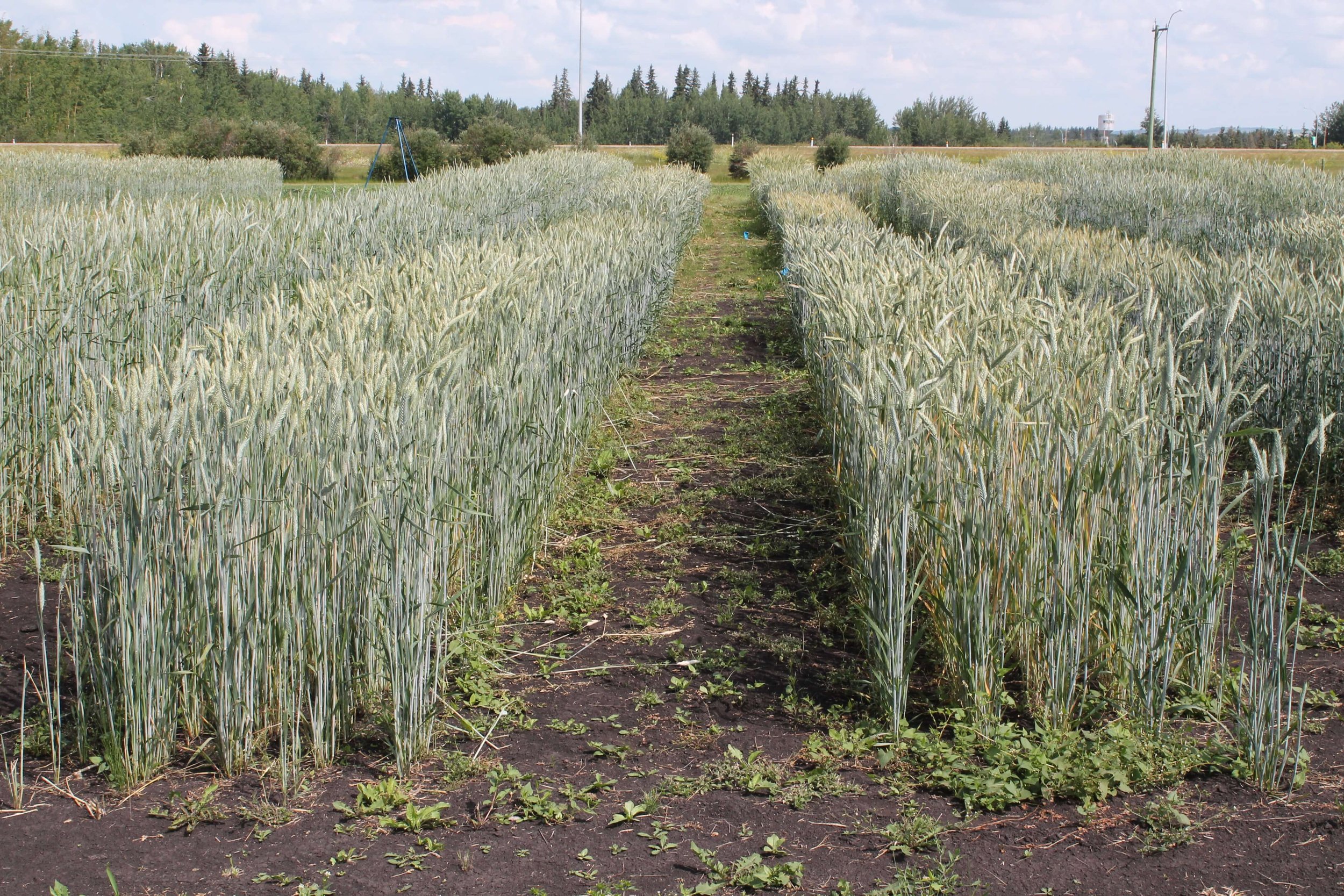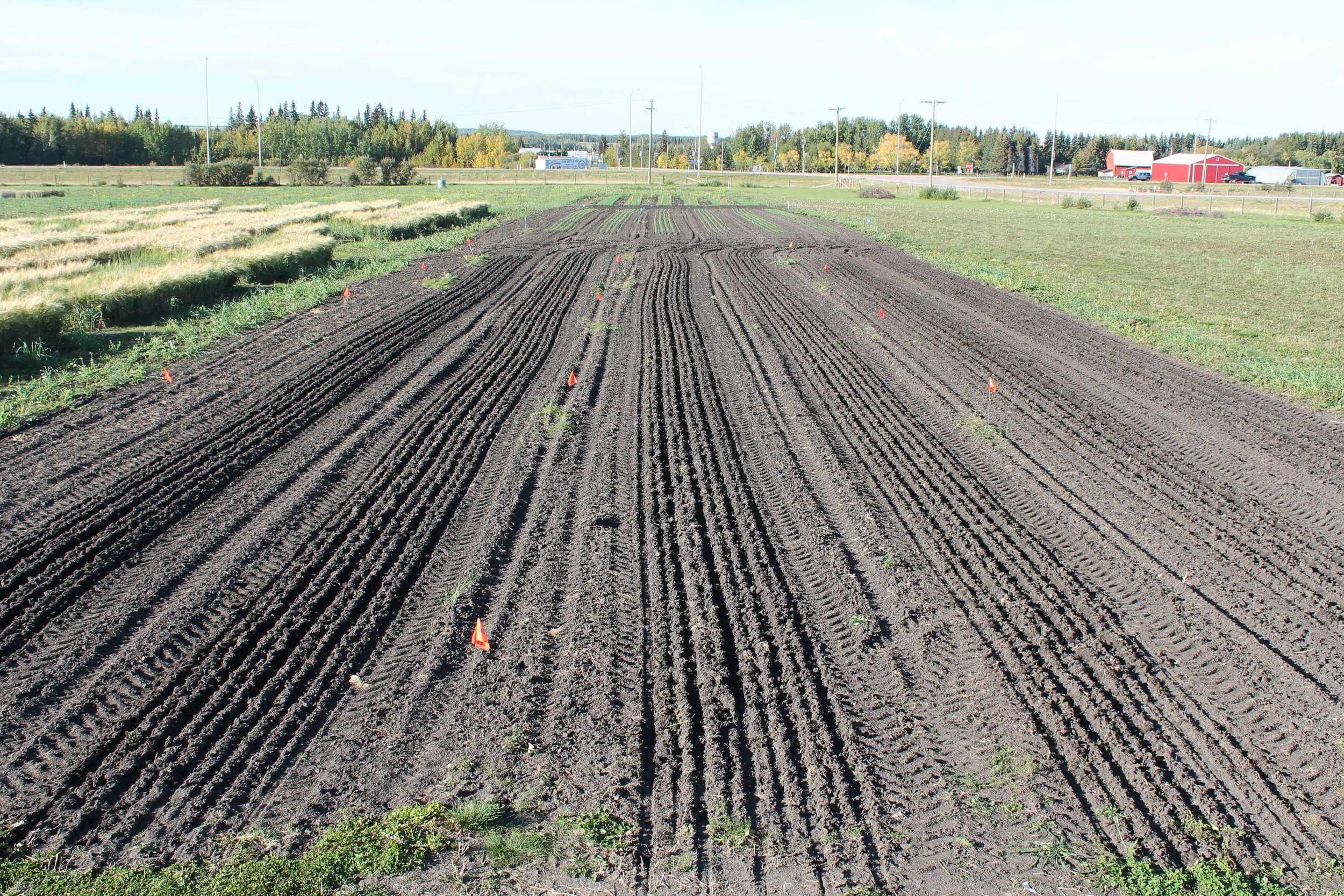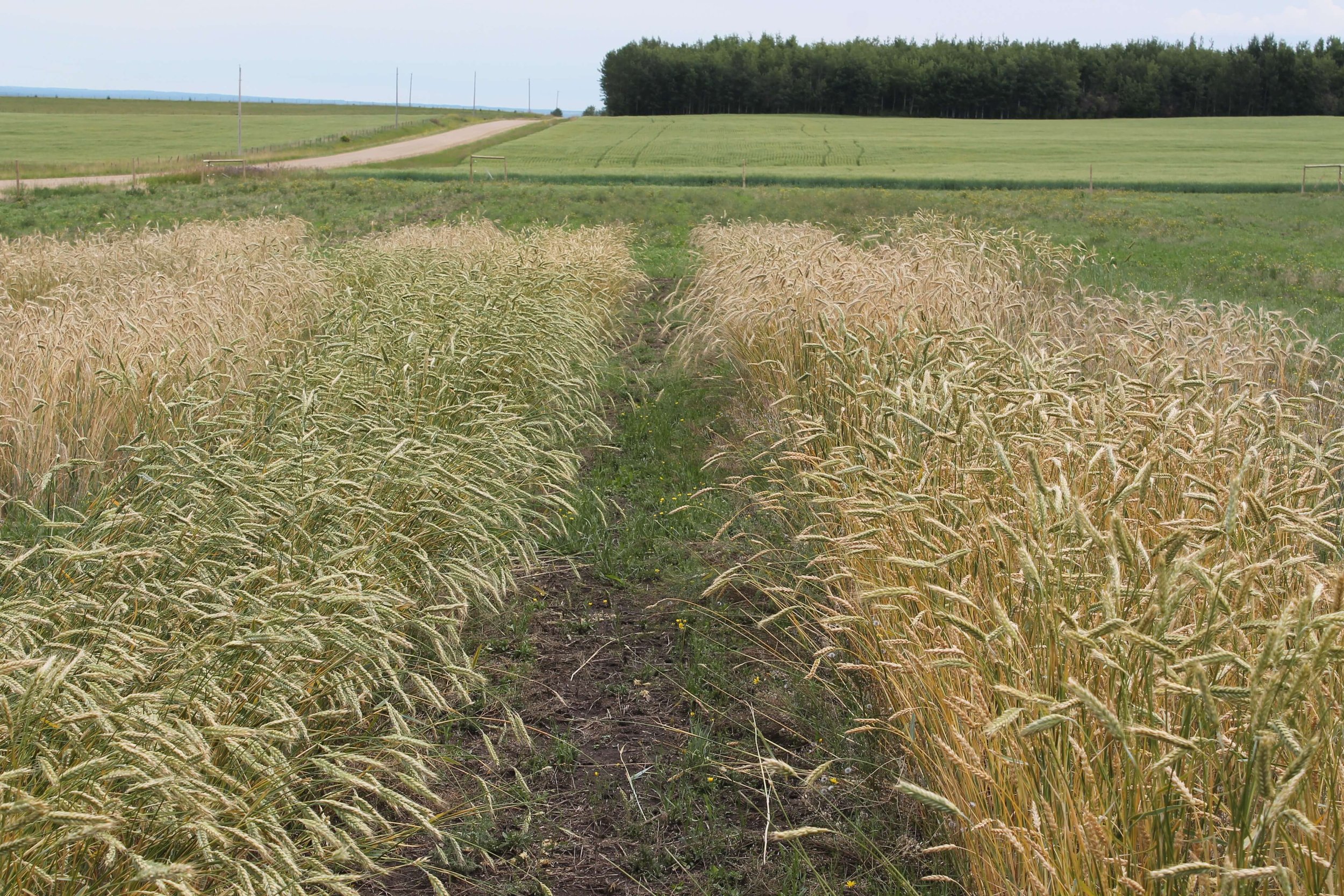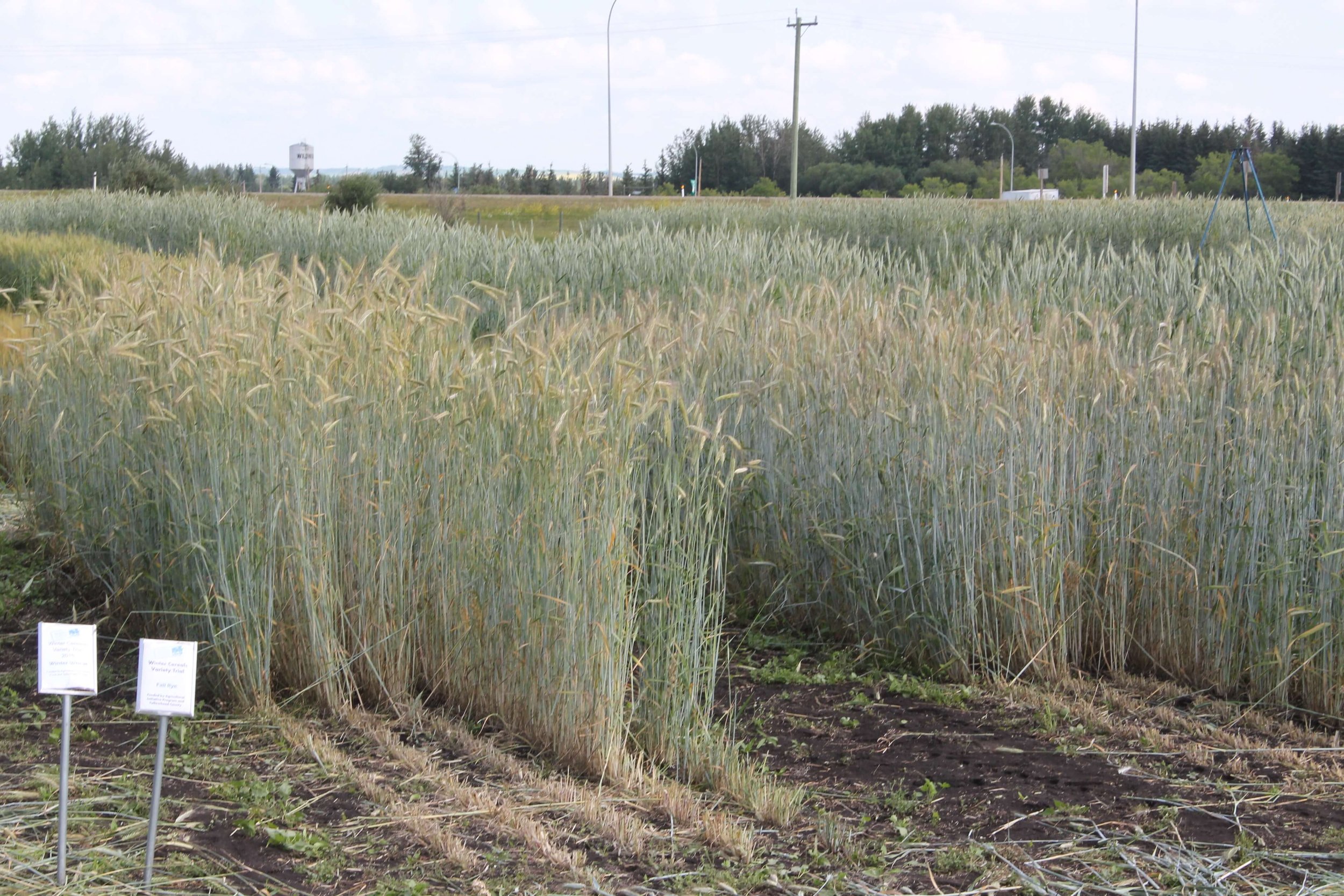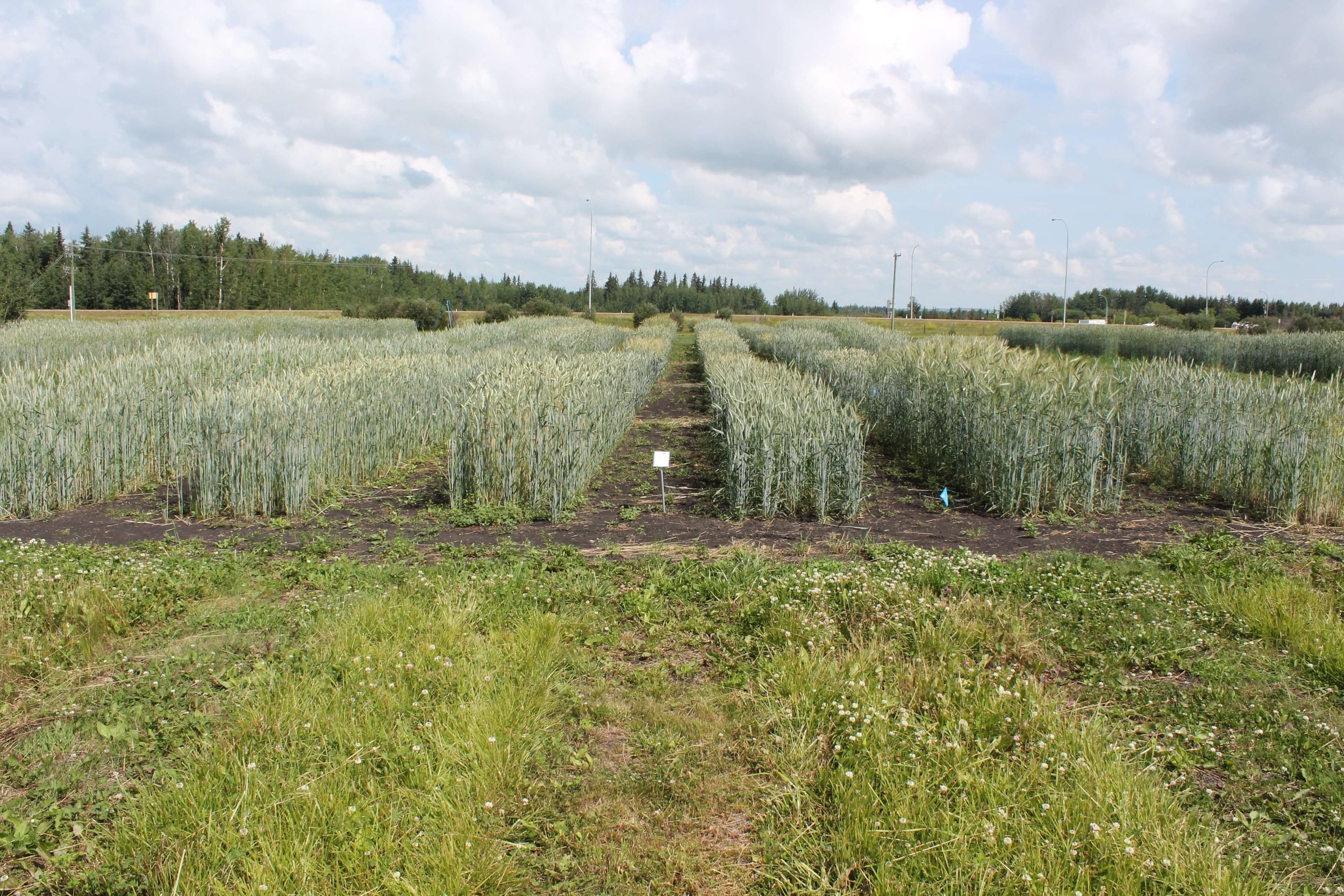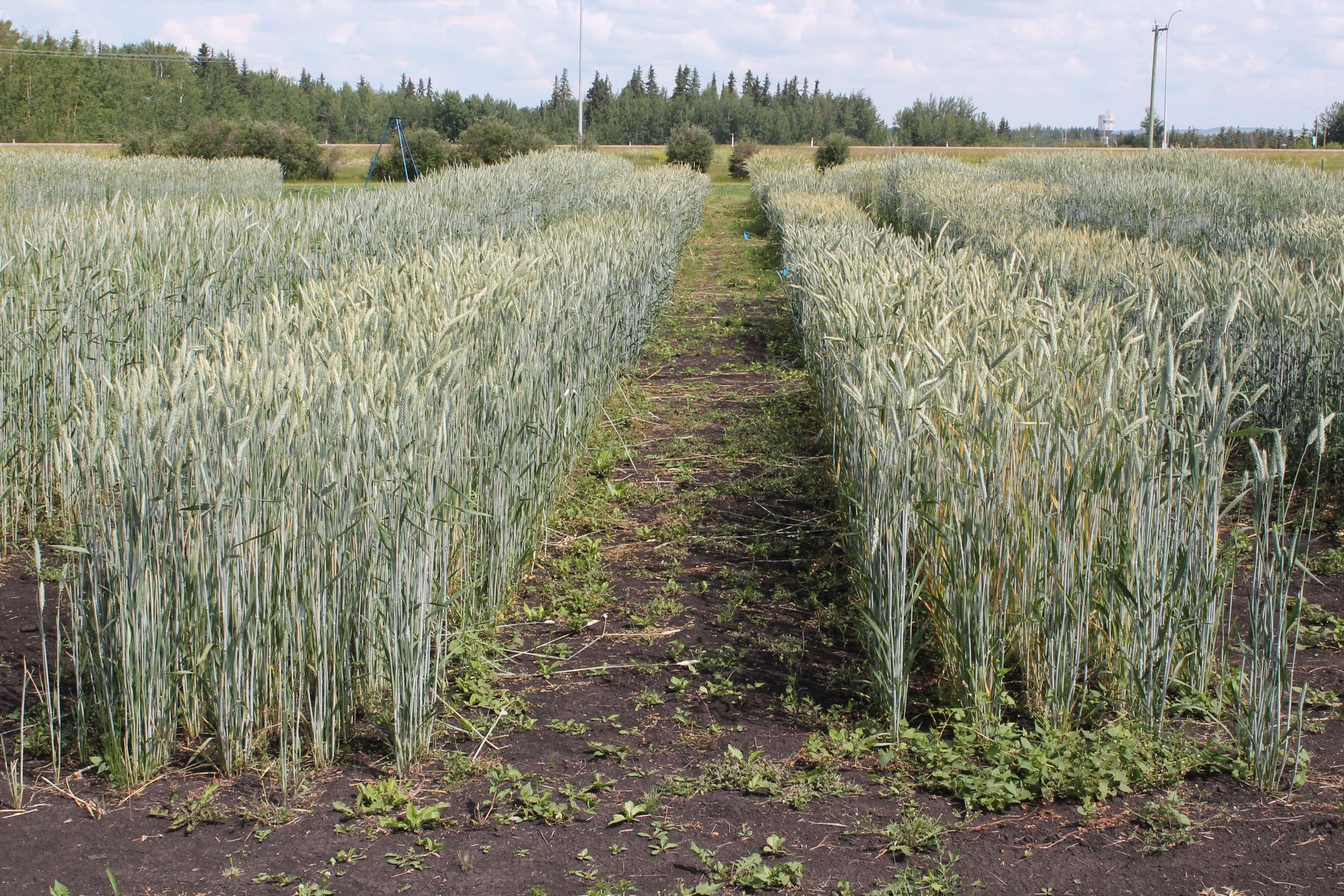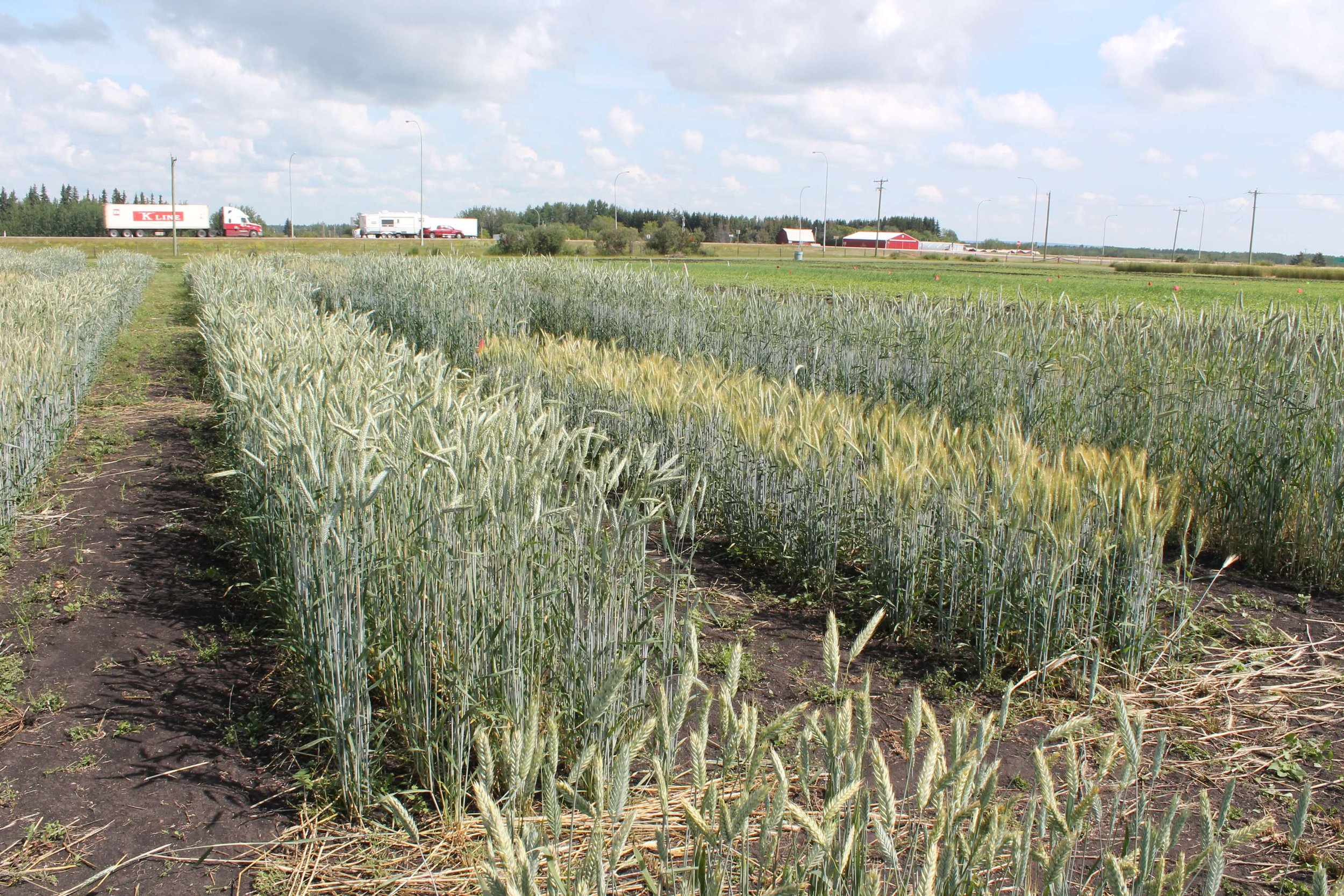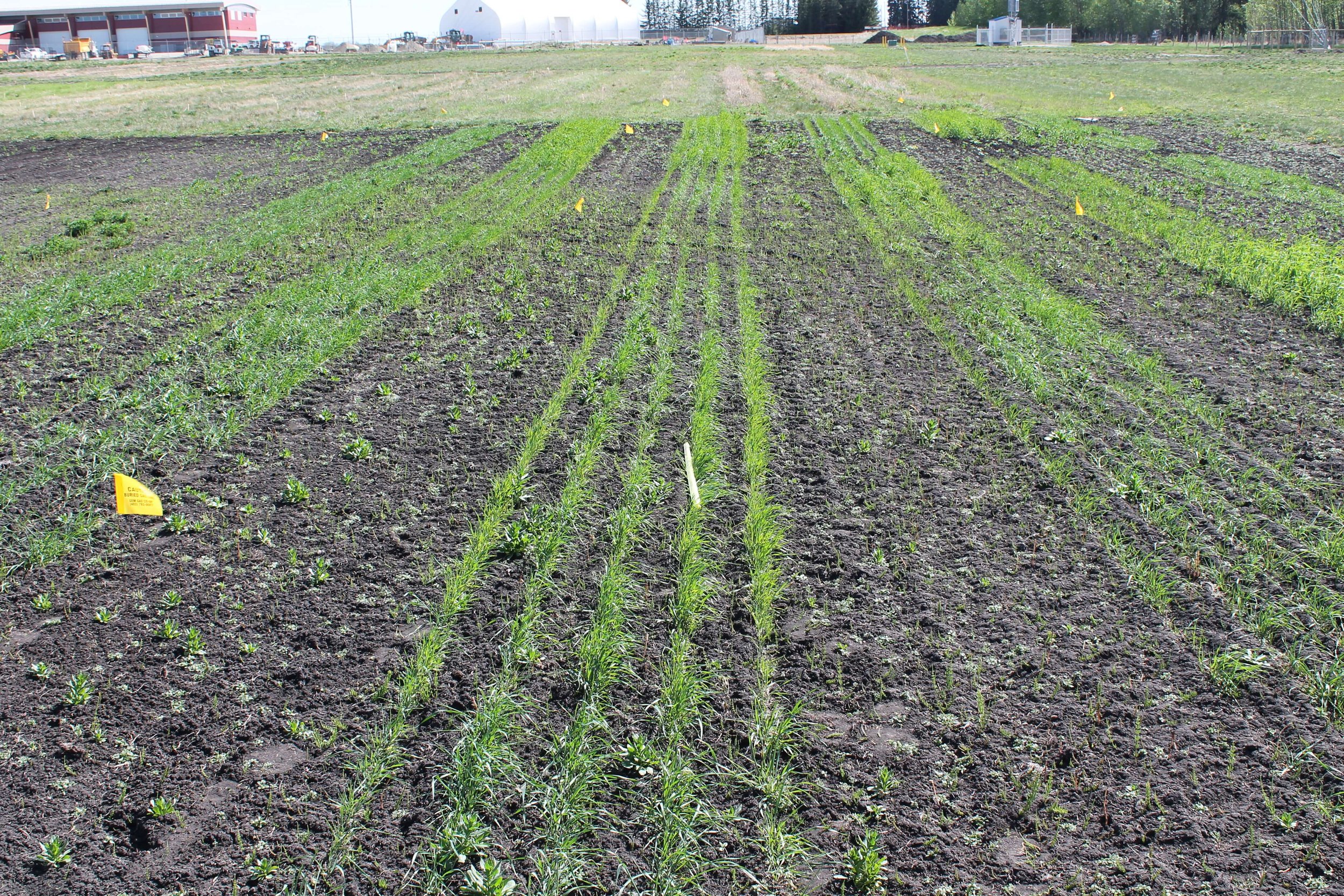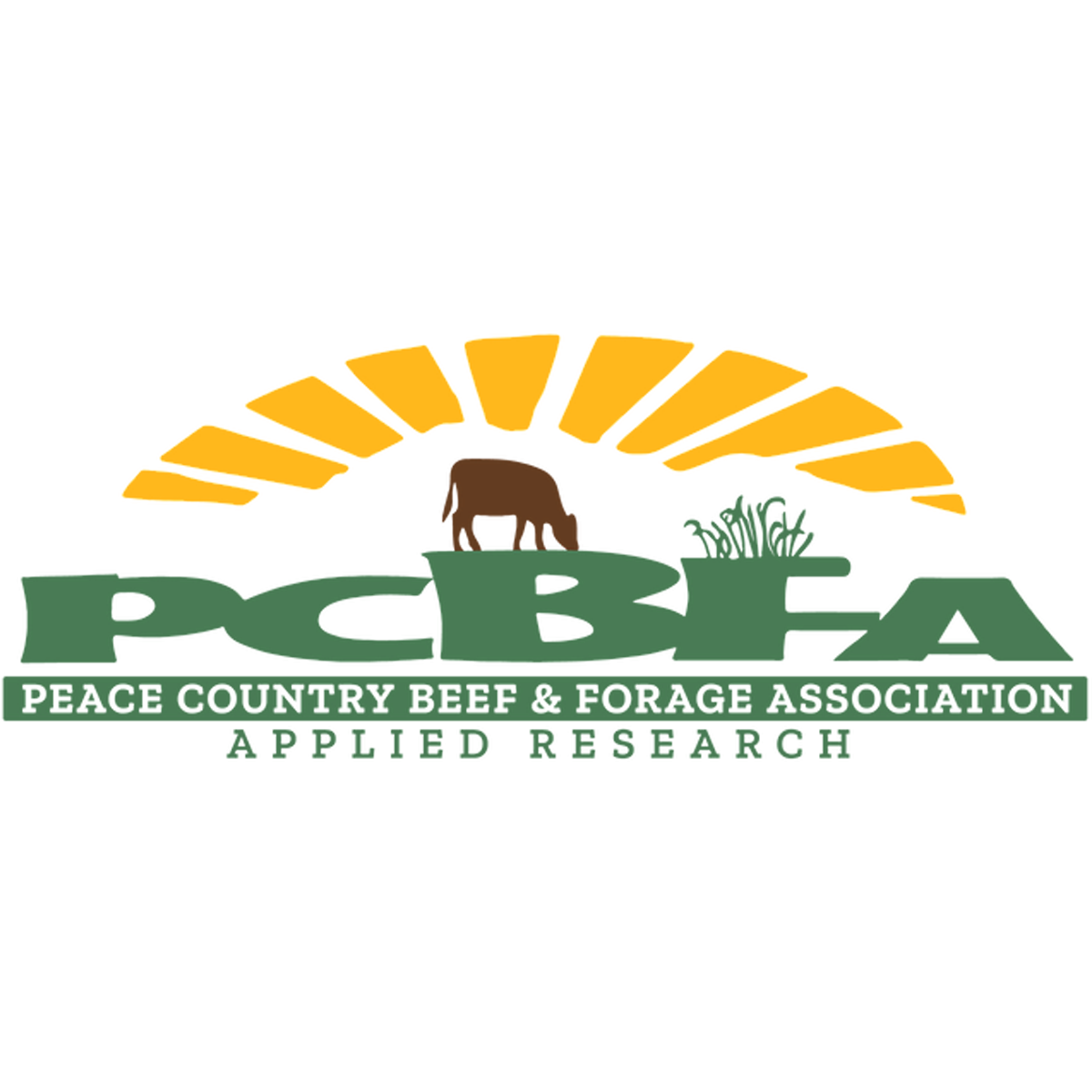Winter Grazing Variety Trial (2017)
Partners.
Winter Grazing Variety Trial (2017)
Overview.
This project researched a system that involved early August seeding of winter cereals, grazing fall growth during the winter and harvesting a silage or grain crop the following year. This dual purpose practice is common in the south-west United States (Winter, 1990) but Canada’s much shorter growing season discourages adoption here (Baron et al. 1999, Salmon et al. 1996). However, studies suggest that winter cereals may extend annual crop production from four to six months (Baron, 1993).
This trial explored the agronomic and economic impacts of fall grazing through small plot studies in Alberta (one near Wildwood and two near Medicine Hat under irrigation) and field scale information from a local producer using the system.
Objectives.
To evaluate the effect on biomass (silage) and yield production with fall grazing of cattle on winter wheat, fall rye, winter triticale and blends of each. To evaluate the differences in crop type and varietal suitability to this practice. Quantify potential differences in winter survival with the application of a seed treatment. Complete an economic analysis of silage value following grazing vs. ungrazed and the potential to carry the crop through to yield.
Trial Information.
This trial explored the agronomic and economic impacts of fall grazing through small plot studies in Alberta (one near Wildwood and two near Medicine Hat under irrigation) and field scale information from a local producer using the system.
Data collected throughout the trial included: late fall emergence counts, spring survival counts, as well as yield and quality data.
Varieties used in the trial were:
Fall Rye: Hazlet
Fall Rye: Prima
Winter Triticale: Fridge
Winter Triticale: Luoma
Winter Wheat: Moats
Winter Wheat: Ptarmigan
Blend: Prima + Fridge
Blend: Prima + Ptarmigan
Blend: Fridge + Ptarmigan
*Each variety was tested with and without the seed treatment Cruiser Maxx
WCFA continued to collect data in 2017, from both the Wildwood and Mayerthorpe sites. Plant counts were conducted in spring 2017 and samples were collected for yield and quality at the end of the growing season.
The final report will be issued early in 2018, and once it is complete will be available for download.

